Last week’s story on retirement at sea sparked a huge reaction from readers eager to find out how they could spend their days cruising instead of living in landlocked penury at home.
Suddenly, living on the ocean seemed so much more affordable. And it is.
Once the domain of the mega rich – The World, a luxury vessel that sails around the globe continuously and numbers Ros Packer and Gina Rinehart among its residents was launched in 2001 – now a number of companies have emerged that will be home to around 1,000 residents in around 500 private rooms and apartments.
Storylines is one of them. The MV Narrative will launch in 2025 with 11 types of residences on board. The largest is Global which is 1,970 square feet split across two levels, with up to four bedrooms, two bathrooms, a large balcony, a dining room that seats six, and a walk-in closet.
Facilities are spread across 18 decks, that include 20 restaurants and bars, a 10,000 square foot gum and spa, open 24 hours a day, three swimming pools, a school, a library, a bank, and office spaces. The ship will also have a theatre, performance, and movies. But extravagant entertainment won’t be a focus.
But the MV Narrative’s units are still pricey — at around USD$1 million to UDS$8 million. The company also launched an option for residents looking to purchase a 25% share starting at around USD$600,000, allowing them to stay on board for three months a year.
Now a new line, Victoria Cruises, is offering a another option for long-term, live-aboard residential cruising, with a stronger focus on affordability and individual experience. Long cruises of up to six months work out at an inclusive price of about $258.
Set to launch in May 2023, the first sailing will run for 27 months, with over 200 destinations visited across more than two years of sailing.
However, the ships will generally stay in port longer than normal cruise ships, with a total of 540 days at ports. Time spent in each port range between one to seven days, offering guests the chance for longer and more immersive stays and shore excursions.
CEO Olavs Zvinelis says the Victoria Cruises offering is completely new to the world of cruising. “Victoria Cruises Line offers our customers a unique lifestyle that is completely new to the shipping industry.
“We provide rental cabins at affordable prices to clients who want to live on a boat and travel the world without any strings attached. It’s our mission to deliver a unique houseboat experience for our residents, who will live on board like a little family.”
Mr Zvinelis adds: “We have no competitors. Our value for money is by far the best, even compared to classic cruise ships.
“Rather than the ownership option, which is too costly for many, Victoria Cruises Line is proposing an intermediate solution: chartering. This will give people a much more affordable way to travel and live on a houseboat. In summary, a houseboat lifestyle can offer much more than a classic cruise.”
Mr Zivnelis says half of the rooms have already been reserved, with the majority of cruisers opting for an unlimited, undefined rental period.
You can also expect high-quality ships, with two former Holland America vessels making up the line’s fleet. Formally, Veendam and Rynadam, they’ll now known as Victoria Majestic and Victoria Amazing.
The Victoria Cruises Line story
Marketing manager Jan Kovick shared with Cruise Passenger what led to the birth of Victoria Cruises Line.
“Before COVID, we were already thinking about starting a houseboat service based on The World, which is cheaper and does not require customers to buy a cabin/suite. Since not everyone has millions of dollars in wealth, buying is not feasible for everyone.
Mr Kovick says he sees a real future for this lifestyle, with people becoming less content with settling for traditional retirement.
“It is a completely new alternative to retirement. I see a future for this lifestyle. People who have been on cruise ships several times and have enjoyed it will certainly consider living on a cruise ship for their retirement. How much better to spend time in a different city every week, exploring new things, than doing the same activities week after week in your house? We offer an affordable housing & travel lifestyle that anyone can afford.”
The cruise line views itself as a real project of passion, rather than profit. They want to create an affordable alternative lifestyle, rather than squeeze dollars out of customers.
“Victoria Cruises Line is not a public company so we are not responsible to the shareholders for the extra profit. We work with a small profit margin, therefore, so that as many people as possible can live on the ships in the long term.
“We all know that the cruise industry is all about squeezing as much money out of you as possible in the shortest time. We’re not after extra profit, we’re after the economical operation and a profit that can sustain this company. The manager doesn’t want to drive a Ferrari, we in Europe are happy with a bicycle or a scooter.
“The big cruise companies are constantly building new ships and taking out loans, which they have to finance from some source. VCL has no loans and does not build new ships.”
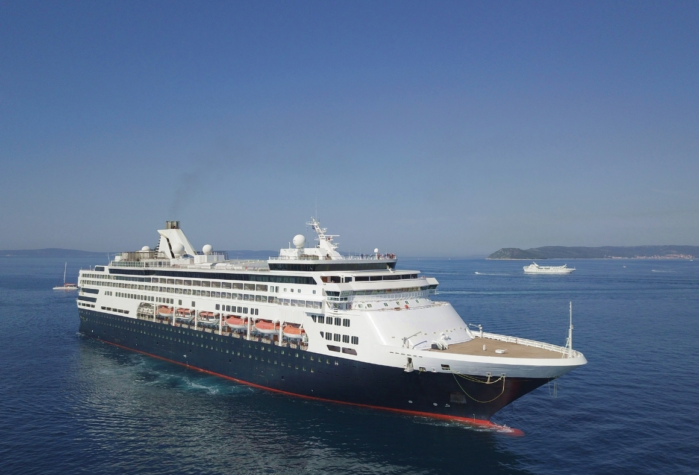
How much does it cost?
The cost of an indoor stateroom starts at US$7999 for two people per month, this comes out to approximately $11,725 per month, which comes out to $1352 per person per week or $193 per person per day.
Prices of course rise for higher-tier cabins, you can find a full pricing table here.
It is worth noting that the cruise line is making an effort to make indoor cabins more enticing. Each indoor room has an LCD monitor instead of a window, that shows a live feed from external cameras of the ship, even with a curtain in front of it to add to the window effect.
Oceanview cabins start from $242 per person per day and suites start from $386 per person per day.
What’s included
Mr Kovick says everything essential is included, with some extra fees for optional extras.
“The monthly rent can be said to include everything. It’s like living in a retirement home.”
Includes meals three a day, drinks available all day, in-room service (coffee, tea, soft drinks, draught beer, table wine). All onboard activities are also free. I would like to point out that there is no extra tip because it is included in the rental price.
“However, there are a few things you have to pay extra for: visa fee, shore excursions, premium drinks, beauty salon. Port fees are also included in the monthly rental. If you need to return home for a shorter period, you don’t have to pay the full rental fee for the time you are away, you only pay a reduced daily rate.”
Shore excursions
Mr Kovick says the big appeal of shore excursions with Victoria Cruises is that you have more time in ports and more time to explore.
“Clients can choose to join an organised trip or explore the port cities on their own. Since we spend several days in each port, shore excursions can also take passengers to more remote places. They also have the possibility to go on shore excursions lasting several days, including a multi-day safari.”
Also unique to the cruise line is that cruisers actually vote on how long to spend in each destination. They are sent a link to an online voting portal, where they can select their preference for between one to thirty days for each destination. The final itinerary will then be formed based on guests’ preferences.
Who’s booking?
The majority of bookings have been coming from the US and Canada, with few Aussies making inquiries so far.
“There are a lot of people who are interested, and we can see that the pensioner generation is keen to take part in such an adventure.
“We specifically targeted the USA and Canada, as we planned to fill at least 80% of the boat by the time we set sail. We focused our target age range more on the 65+ age group, as these people are no longer working and can travel the world at a much slower pace.
What are the other options out there?
While Victoria Cruises Line is certainly new and unique, the idea of retiring on a cruise ship is not. Cruise Passenger wrote last week about Gayle and Vic Doe, who has been cruising full-time for about $150 each per day.
There are a few different approaches to trying to set yourself up for a life at sea and here’s a breakdown of the directions you can take.
Back-to-back cruises on budget ships
Similarly to Mr and Mrs Doe, Nancy and Robert Houchens have been cruising full-time, with a view towards making it their lifestyle. The couple has been cruising since the 1980s and has amassed more than 1000 days on carnival ships across 135 cruises, where they now cruise full-time.
The couple sold their North Carolina home and most of what they owned with their minds set on full-time sailing.
Ms Houchens told Cruise Passenger how much they spend living this lifestyle.
“When we cruised for vacation, our budget per week was more, after all, it’s a vacation! In order to do this for at least 10 years. We had to change our mindset.
“Instead of suites and balconies, we now book an oceanview and occasionally an interior. We don’t do excursions (we have been to the same ports so many times) unless we are somewhere we have never been.
“We look for the best deal, not the destination.”
Ms Houchens says the couple originally started by putting aside US$4000 per month, coincidentally the same cost of a Victoria Cruises sailing, but that has crept up a little over time due to the cost of living.
“Our original budget was $4000 a month. This included gratuities. Of course, things are more expensive now so that budget has had to increase a little. Depending on where we go, we may or may not need the internet.
“Our phone plan covers most everywhere for 25 cents a minute to call with free internet and texting. We have an annual travel insurance plan and one of our credit cards also has travel insurance. To search for insurance options, we went to www.insuremytrip.com. We pay less than $400 a year total for both of us.”
What to consider
The benefit of cruising this way is that it keeps the costs low. Cruise lines have rewards programs that offer significant discounts and other extras to long-term cruisers. Furthermore, to an extent depending on your budget, you can pick out itineraries and destinations that suit you. There is also less of a commitment than residential options, you can simply stop at any time.
However, picking out back-to-back cruises can take large amounts of planning and could involve a decent amount of moving around cabins or getting on-and-off the ship. It may be tough to get as settled in as you would cruising residentially. Furthermore, while residential cruising is designed particularly to be non-repetitive for its residents, sailing with the same cruise line and maybe the same itineraries over and over may become a repetitive experience.
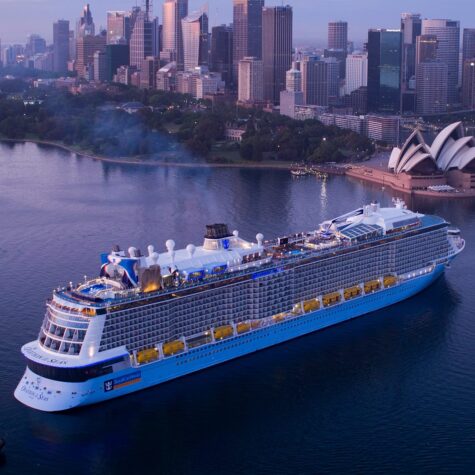
Living on a residential ship
Cruise Passenger also covered the story of Angela Nuran and Paul Consentino, two cruise fanatics who decided a more permanent life at sea is for them.
They opted to book with Storylines, a residential cruise line that offers long-term options for living at sea.
The Florida couple leased a cabin on MV Narrative for 24 years, which cost them about $3.5 million, as well as yearly living charges of $190,000. Even over the long time period, this comes out to about $460 per day.
However, the cheapest cabins start from $876,310 for a 24-year lease, which is only $100 per day, however, there are the living fees, which for the cheapest cabin equals $3675 per month or $120 per day. This totals $220 per day, which is not much more expensive than Victoria Cruises Line.
The ship offers five-star luxury, 20 dining and bar concepts, a movie theatre, three pools, a 10,000-book library, and everything else you’d expect on a luxury ship. Furthermore, it’s an all-inclusive experience with all dining, drinks, activities, entertainment, WiFi, gratuities and everything else included.
Similarly to Victoria Cruises Line, the ship will stay longer in ports than traditional cruise ships.
What to consider
The benefit of residential cruising is the stability and long-term consistency it offers. You have a true home for yourself and don’t have to consistently be planning, budgeting, and mapping out your cruises. You’ll never need to fly between airports to get on your next cruise or stay in hotels for a few nights, your whole life will be perfect in one place.
Furthermore, you get a more immersive experience in ports, with longer stops and world-stretching itineraries meaning you’ll see it all.
You’ll also be around the same people for long periods of time, giving you the chance to establish stronger relationships with those onboard with you.
However, the fallback of a residential option, particularly with Storylines, is the huge commitment it entails. You’re committing to an extremely long lease, you can’t exactly just decide it isn’t for you.
If your health deteriorates, you grow tired of the lifestyle or you wish to return home for whatever reason, you have already committed serious upfront costs.
Furthermore, with residential cruising, particularly at this scale, still quite new, it isn’t yet clear how the atmosphere will differ from regular cruises, or if these long-term ships will capture the magic of traditional cruising that is so beloved. Adding to this, companies like Victoria Cruises and Storylines are very new and still yet to bring their product to market, it would be best to consult with a financial advisor before making long-term investment decisions.
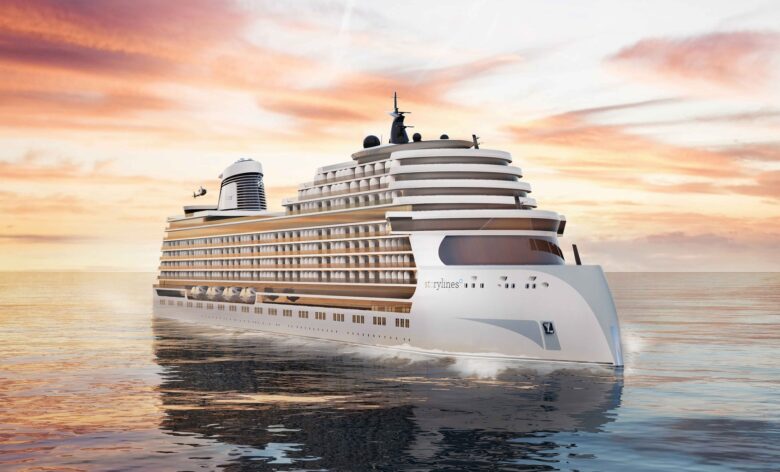
Living on a luxury line
If you can’t wrap your head around residential cruising but also don’t want to be among the craziness of a Royal Caribbean or Carnival cruise forever, you could opt to retire to a luxury cruise line.
Morton Jablin, 98 has been living on Regent Seven Seas cruises for 18 years. A former Navy captain, Mr Jablin was destined for a life at sea and now lives amongst the luxury of Regent Seven Seas.
Mr Jablin loves the simplicity of his lifestyle, telling Porthole Cruise “This is a much better life than senior citizens home anywhere in the United States or anywhere in the world. They take marvelous care of you. If you need something you have it in 10 minutes. You can have a doctor in your room in five minutes.
“This line, Regent Seven Seas is a wonderful company. The people that work here are kind, considerate, and gracious. They treat me like family. It’s a wonderful life.”
Retiring on a luxury ship will mean incredible itineraries, opulent all-inclusive living, and amazing facilities, however, it will not come cheap.
To sail back-to-back on Seven Seas Explorer from April 1, 2024, to April 14, 2025, will cost a minimum of $397,110 or $1087 per person per day, exceedingly more pricey than other options. In saying this, these prices aren’t final. You could potentially negotiate with the cruise line, there are other less-expensive luxury lines, and there’s the option of taking a world cruise rather than sailing back-to-back, but whichever way you choose, it won’t come cheap.
What to consider
One pro of the significant prices is that luxury cruises are all-inclusive and you won’t really have to worry about many, if any, extra costs.
You will live a truly comfortable life, with butler service and luxurious surroundings making every day its own treat.
The obvious drawback is obviously the prices, it will only be a possible retirement option for those retiring with cash to splash, but if you do have the money, there couldn’t be a better way to spend it.
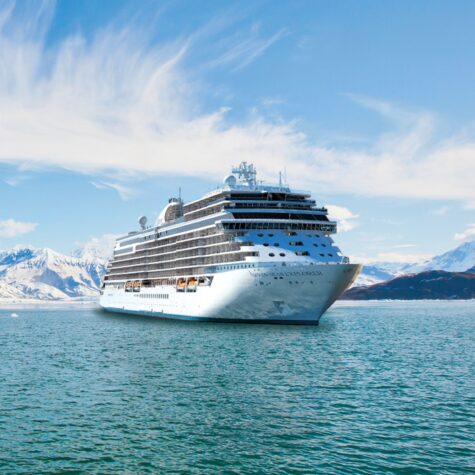





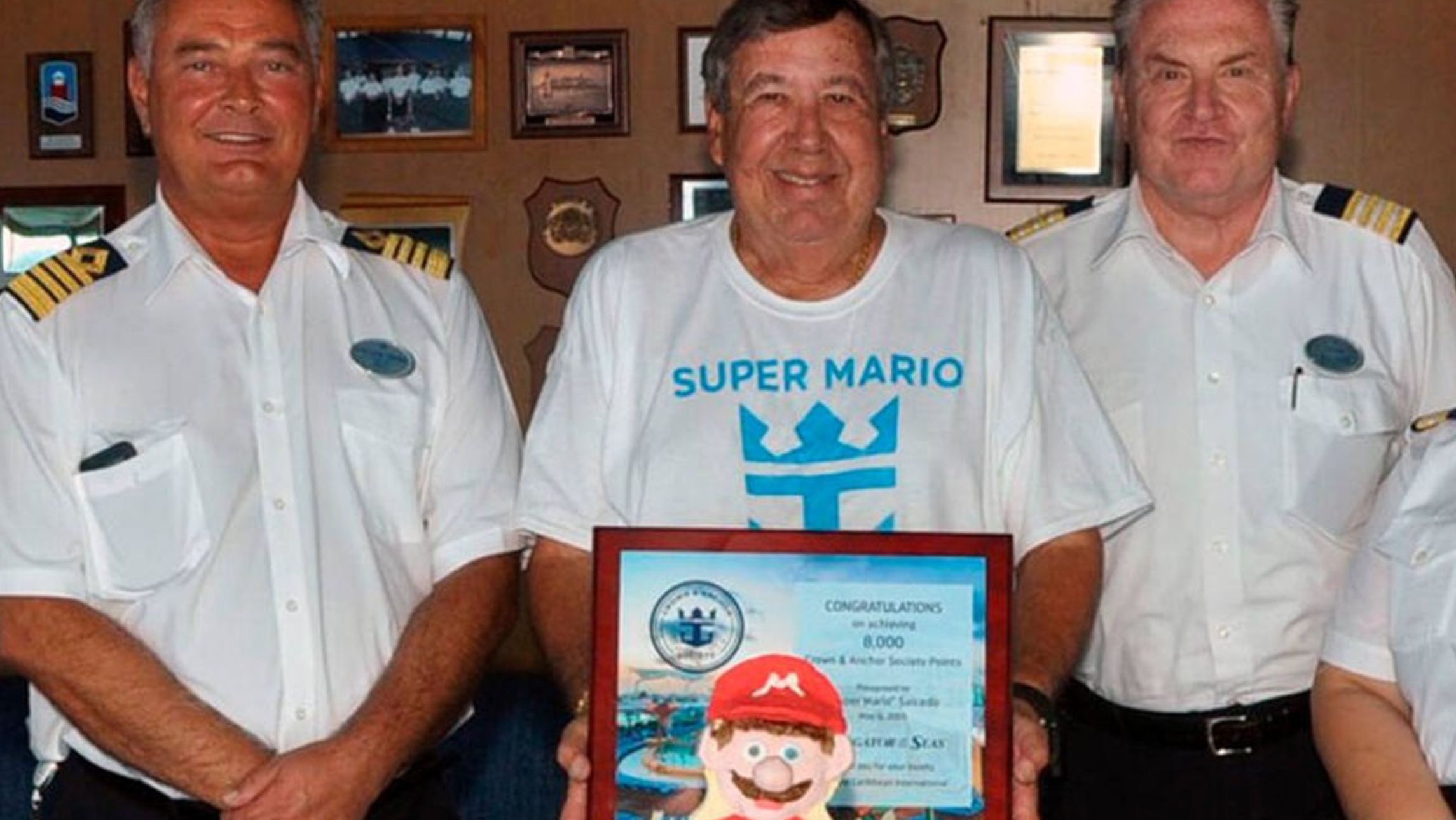



Living on board
I am very interested to learn more about full time living on board and travelling the world…continually.
Certainly in six or 3 month periods with a month to return home to visit the kids !
I’m particularly interested in your information and moreover on a budget style living onboard experience.
My wife and I are not super rich…just average …so will look forward to your advice.